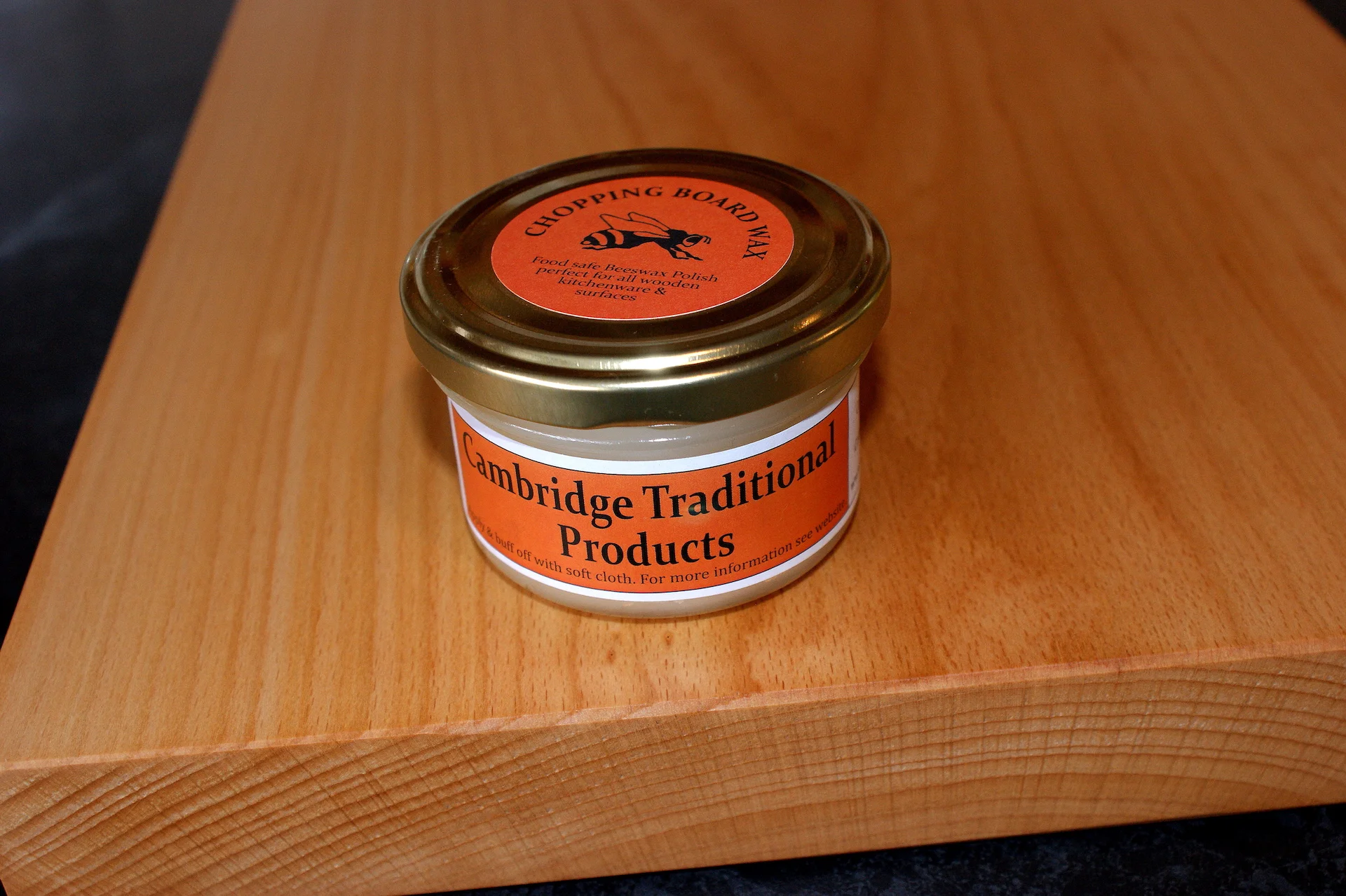Chopping Board Wax




Chopping Board Wax
A specially developed food safe polish, designed for use on food preparation surfaces and wooden kitchenware, such as chopping boards, utensils, bowls, bread bins and kitchen worktops. This 100% non-toxic product is ideal when our traditional Turps based polish may not be appropriate, such as on children’s wooden toys, cots, high chairs, etc.
Uses
Chopping boards
Wooden kitchen work tops
Wooden cooking utensils
Childrens wooden toys
High chairs
Cots
How to use
Our wax is easy to use. Just apply with a cloth, and it is absorbed into the wood. After a few minutes it can be buffed up and polished. The amount of applications is often a matter of taste, but also depends on the type and condition of the wood. Dryer wood will absorb more polish. You can apply as much polish as you like, but you should be wary of applying too much, as doing so could create a ‘smeary’ excess on the surface, which will be more difficult to buff off. The polish can be reapplied as required over time.
Ingredients
Chopping Board Wax is a blend of White Mineral oil and British Pharmaceutical (BP) grade beeswax.
White Mineral Oil BP (Paraffinum Liquidum) is commonly used in products such as baby oil, skin lotions, lip balm etc.
BP Grade Beeswax is the most highly refined beeswax, used widely in cosmetics .
Why should I wax my chopping board?
Anything made of wood will benefit from being polished with wax. The benefits are twofold - a beeswax polish will improve the appearance of the wood by enhancing the natural colour and grain, but also, it will protect the wood. Beeswax polish fills the grain of the wood. Wood that is not protected, (either with wax, oil or varnish or lacquer), will dry out and become vulnerable to cracking and discolouration. So, wood that is treated with wax will look nicer and last longer. This is especially true with wood that is going to be washed, as the frequent wetting and drying will make the wood more vulnerable to cracking. Wax makes the wood more water-resistant, which will make it easier to wash and dry. This is also important for wooden worktops, which would be wiped with a damp cloth. These are often treated with oils that do a similar job, but the beeswax finish is more water resistant and more attractive. Also, with new wood, beeswax polish creates a smoother finish than you often get with oils, as it smooths the grain. Tiny fibres in the grain of the wood are often raised by cutting. Some finishes cause them to stand up, whereas beeswax smooths them down.
Left: Before applying the polish. Right: After applying the polish
Before
After
The story of Chopping Board Wax
We have sometimes been contacted by people asking if our traditional polish is suitable for food preparation surfaces. Also, we have noticed there is a real trend these days for quality, decorative wooden kitchenware such as worktops, chopping boards, bowls, utensils etc.
The ingredients in our traditional Turps based beeswax polish meant that we could not recommend it for sale as ‘food safe’. Turpentine (although it evaporates out of the wood fairly soon after application), is classified as harmful. Also, the general purpose beeswax is not technically suitable for food or cosmetic use. Whilst well refined and filtered, it is still less refined than the BP grade that is required for a ‘food safe’ polish. Our ‘Traditional’ polish is a cream emulsion. We make it to a traditional Victorian recipe because this creates a polish that has benefits for larger scale use such as cleaning and restoring furniture, antiques, polishing floors, etc.
For our new food safe polish, we wanted to keep things as simple and pure as possible, to create something that is 100% non- toxic, free from any solvents or strong odours so that people would feel comfortable using it on their kitchenware. We wanted to create the best quality, ‘food safe’ polish we could. We experimented with various natural oils, but found the problem with most nut/fruit oils is that they go rancid over time, and we didn’t want to make a polish that only has a few months shelf life. We also thought it would be best to avoid any allergy issues, so in the end mineral oil was the only sensible choice.


